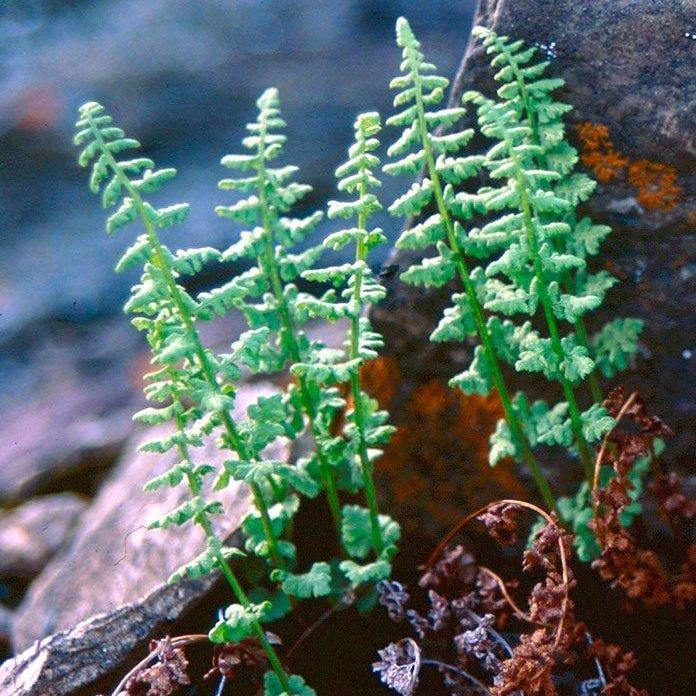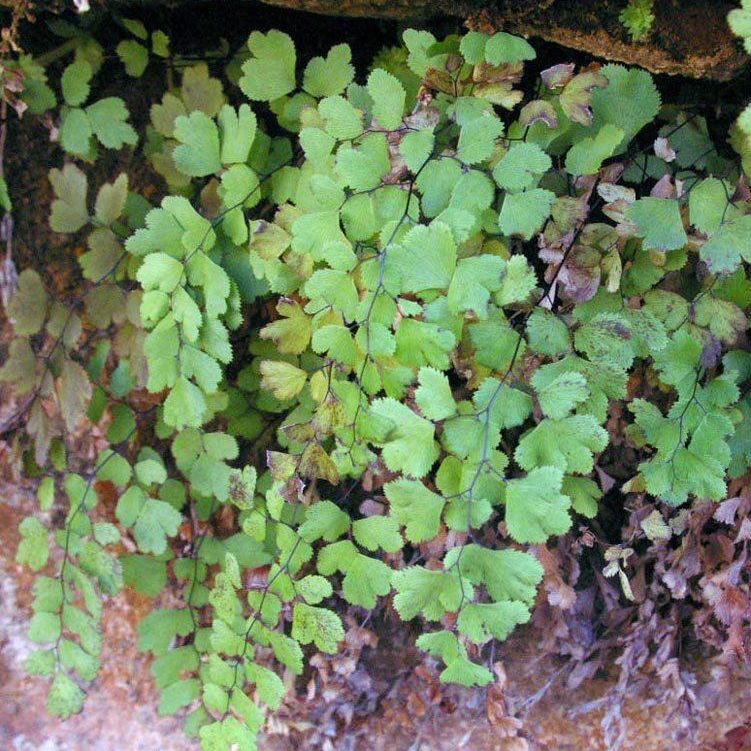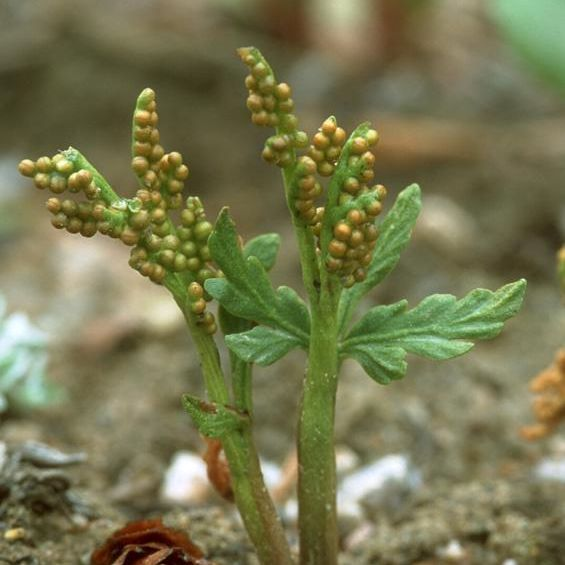by Kenton Seth
Editor’s note: This article is abridged from the original for use in this newsletter. To read the full article, originally published in The Blazing Star (the quarterly publication of the North American Native Plant Society, nanps.org)
For those who have long been supporters of native plants and their supported creatures, the recent fad of wildlife gardening across America is heartening. The movement is dominated by prairie plants grown in prairie style, perhaps inspired by the pop-culture news of the decline of the charismatic monarch butterfly (this isn’t totally inappropriate for a country whose middle was once dominated by the prairie biome). But, habitats vary more than that, and the continent is home to a plethora of them, each with their own specialists and local flavor. We can think of habitats broadly as forest, prairie, desert, and rocky places. I believe that any given garden style mimics one of the great biomes, however successfully or not. Some styles are directly inspired by wild places, providing a clean archetype connecting a true biome to a human landscape counterpart.
Crevice gardens were developed in Europe as a means to grow mountain plants that were not satisfied with simply being in a rock garden; to grow, they seemed to require being forced into rock crevices. It has become so widely and internationally embraced, most plant-collection-motivated botanic gardens have a crevice garden to house their saxatile (rock-loving) plant collections. Many, like the Royal Horticultural Society (RHS) Garden Wisley near London, use them as immersive exhibits to educate students and visitors about alpine plants of alpine and other rocky environments.
Within most broadly defined climates there exists some rocky place – where parent materials are at the surface, soil is thin to nonexistent, and a unique niche is available to welcome the evolution of very site-specific plants. These saxatiles may not have to compete with other plants in more fertile places, may avoid wildfires, escape grazing (by being suspended on a cliff as a “chasmophyte”) or adapt to toxic minerals (like serpentine) to have a place of their own. Even in forest-dominated regions, there are plants (like Heuchera spp and ferns) which specialize in the rock cracks of boulders underneath the forest canopy: rooted away from the wildly complex and possibly competitive forest floor. They may even simply benefit, in their tiny statues, in being elevated safe above smothering leaf-fall.
(Editors note: Native fern photos below courtesy of Colorado Native Plant Society)



Crevice gardens have been defined as a garden built with more than half of its surface covered in stone (usually deeply buried) for the express purpose of creating crevices for plants to grow in. The top and bottom sides of a plant are distanced from one another thanks to the rocks – each side given a bit more of the temperature and conditions it seeks. Essentially, tops are dryer and warmer while bottoms are wetter and cooler. The surface of a crevice garden may be level or tilted dramatically, further varying drainage and where moisture accumulates. In addition, the orientation of rock faces creates an incredible diversity of microclimates in the garden setting – like a tiny mountain with a warm sunny South face and a cooler North face where snow lingers in winter. Many gardeners report being able to effectively stretch their USDA climate zone in a small pocket of crevice garden by one or two zones. It’s not surprising that most crevice gardens use no compost because of the focus on saxatile plants. In most regions around the world, pure sand alone is an ideal “soil,” and in dryer regions like the Western US, gravel fines make a more water-retentive, all-mineral growing media on their own. Gardeners have observed that many plants (Penstemon comes to mind here) live longer in crevices, perhaps because they do not overfeed on nutritious soil to “bloom out” and die young or are not attacked by soil-borne fungi and bacteria that thrive in humus-rich, composted soil.


Kenton Seth demonstrating crevice gardening techniques in a Wild Ones Front Range workshop. Photos by Deb Lebow Aal.
While crevice gardens have historically been used to happily home exotic mountain wildflowers from far-off lands, in modern days this garden system is being used to house locally native, rock-loving plants. My own love affair with them sparked because of their artistic appeal, but my commitment to them was sealed when my first crevice garden allowed me to grow, for the first time in my gardening life, the elusive and glorious paintbrushes, Castilleja spp. The first public garden in the Denver area to be completely xeric (here, watered every two weeks) and completely crevice (in the traditional Czech vertical style) was the APEX crevice garden. It continues to be an eriogonum growing machine since we built it in 2014. The very dry surface resists germination of blown-in weeds and sheds debris, accidentally proving its low-maintenance potential. Another regional motivation for using crevice gardens is in the context of ever-diminishing water resources in the American West, where our water bills grow higher and regulations are blossoming that discourage luxurious expanses of lawns.
Rock-crevice gardens give us another element, another feature to use that gives life and interest to a landscape when our consciences are more and more depriving us of installing ponds and lawns. In dry climates, it is better for crevice gardens to not be dramatically tall, which excessively sheds precious rain, but instead take a lower-profile form with a more textured surface to catch and absorb rain. Small specimen plants are elevated a bit closer to viewers, safe from being stepped on or subsumed by larger nearby plants, and spiney genera like Echinocereus and Agave (both of which often have a propensity for rock crevices in nature) can be given safe birth from traffic as well as a pedestal for the admiration they deserve.


As more public and private gardeners use crevice gardens, more universal benefits have arisen. I have noticed in the crevice gardens I’ve built how spiders are often the first visible invertebrate to show up on the scene. This makes me think of how scientists studying newly-formed volcanic islands have observed the head-scratching paradox of spiders, a predator, appearing before their prey. When visiting rock gardens in Europe and interviewing their gardeners, I noticed how the rock garden was the warm place where snakes and lizards gravitated to bask. Many Czech gardeners built spaces with the primary intent of attracting some particular wildlife- like a scarab or salamander. In my own unirrigated crevice garden, tiny, colorful, solitary ground-nesting bees relish dwelling in the well-drained soil because it is not flooded with irrigation or clogged with turf. Crevice gardens – as a charismatic and visible representative of rock gardens – satisfy a niche that is needed in the post-wild novel ecosystems of our human-built landscape. They are a hospitable analogy to a rocky cliff within a city. They can also be a plantable, permeable alternative to a retaining wall, which is more inviting to wildlife or be plantable with flowers, feeding pollinators, larvae, and the mental health of urban dwellers. Do we deserve another wall, or a garden?
Admittedly, rock gardening’s history sprouts from the Victorian era among elite British gentry. Only those with resources (to own land, build follies, and travel to the colonies) could enjoy such rare delights as Gentiana farreri from the exotic Himalayas. But a hundred years later, with rock gardening represented by hobby clubs across most countries in the western world, at least a half dozen revolutionary crevice gardens have been made with the humblest material: broken concrete. This recycled material levels the playing field – a rock garden can be had anywhere there are humans, and in those regions where rock is genuinely not available. Can we jokingly call it “anthropocene limestone?” The Utrecht University Botanic Gardens in Holland- a country who boasts acreage that didn’t exist before humanity and whose region is not one of mountains and rock- built a world class crevice exhibit made of concrete pavers knitted together in spheres, dripping with alpine plants from around the world.

Utrecht University Botanic Gardens have one of the biggest rock gardens in Europe. No natural rock was used for building this rockery: it was built with slag, the waste product of steel production. Photo courtesy of the North American Rock Garden Society.
As we move forward in a modern era where we see ourselves as both subjects and architects of biological systems – capable of escaping what seemed like natural boundaries of mammals, but undeniably limited by certain tethers. We must integrate our ever-growing sophistications of science and intellectual connectivity to that which is closer: we begin to value what is near – what is ours. We appreciate what makes an individual place special in the midst of a network of unfathomable numbers of towns and cities like our own across the planet, and all the unique life in-between. Going forward is also going back- reconnecting to our roots, leveraging our local native plants to face new challenges. A million hopeful strategies exist in moving forward, and crevice gardens – a niche garden feature with a goofy name – is taking its place as one of the tools we will use.
Kenton J. Seth is a thirty-something Western-Colorado based garden designer and builder, specializing in natives regionally and crevice gardens further afield; his business is at PaintbrushGardens.com.
His book, The Crevice Garden: How to make the perfect home for plants from rocky places, by Kenton Seth and Paul Spriggs, will be in North American bookstores in August 2022 and on pre-order at BarnesAndNoble.com.
Wild Ones’ Front Range Chapter hosted a crevice garden talk by Kenton (enjoy listening to the recording here!) and a Crevice Build workshop on April 24, 2022.
Curious to learn more about transforming your garden into a habitat with Colorado native wildflowers, grasses, shrubs, and trees? Check out our native gardening toolkit, register for an upcoming event, subscribe to our newsletter, and/or become a member – if you’re not one already!
